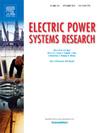Ultra-short-term wind farm cluster interval power prediction based on cluster division and MQ-WaveNet-MSA
IF 3.3
3区 工程技术
Q2 ENGINEERING, ELECTRICAL & ELECTRONIC
引用次数: 0
Abstract
The grid integration of large-scale wind farms has posed challenges to the safety and stability of power systems. To address these challenges, this study proposes a clustering-based direct multi-step interval prediction method for wind farm clusters to quantify the uncertainty in regional wind power generation. In the proposed method, the empirical orthogonal function is combined with the K-means algorithm to divide a wind farm cluster. In addition, the training, validation, and test sets are constructed for each sub-cluster based on the division results. Further, by combining the long-term perception advantages of the multi-horizon quantile-WaveNet (MQ-WaveNet) model and the global information enhancement capability of the multi-head self-attention (MSA) mechanism, the MQ-WaveNet-MSA model is developed to predict an ultra-short-term interval of a wind farm cluster to realize the direct multi-step prediction of multiple quantiles. Finally, twelve wind farms in the Xinjiang area are selected for a case study. The results show that the proposed model has higher interval prediction accuracy than the existing prediction models, which verifies its effectiveness.
求助全文
约1分钟内获得全文
求助全文
来源期刊

Electric Power Systems Research
工程技术-工程:电子与电气
CiteScore
7.50
自引率
17.90%
发文量
963
审稿时长
3.8 months
期刊介绍:
Electric Power Systems Research is an international medium for the publication of original papers concerned with the generation, transmission, distribution and utilization of electrical energy. The journal aims at presenting important results of work in this field, whether in the form of applied research, development of new procedures or components, orginal application of existing knowledge or new designapproaches. The scope of Electric Power Systems Research is broad, encompassing all aspects of electric power systems. The following list of topics is not intended to be exhaustive, but rather to indicate topics that fall within the journal purview.
• Generation techniques ranging from advances in conventional electromechanical methods, through nuclear power generation, to renewable energy generation.
• Transmission, spanning the broad area from UHV (ac and dc) to network operation and protection, line routing and design.
• Substation work: equipment design, protection and control systems.
• Distribution techniques, equipment development, and smart grids.
• The utilization area from energy efficiency to distributed load levelling techniques.
• Systems studies including control techniques, planning, optimization methods, stability, security assessment and insulation coordination.
 求助内容:
求助内容: 应助结果提醒方式:
应助结果提醒方式:


